Physical Address
304 North Cardinal St.
Dorchester Center, MA 02124
Physical Address
304 North Cardinal St.
Dorchester Center, MA 02124

This guide will help you chose indoor plants based on a list of plant care factors that determine how easy or hard to maintain each plant is. Do you want an indoor plant that requires little care? Or do you want an exotic, beautiful indoor plant? This list will help you choose one.
Below is a curated list of 15 indoor plants that thrive in interior environments, emphasizing low light tolerance and easy care, but you’ll also find plants that give flowers and even fruit!. Each entry in the list includes a brief description, a quick-reference table of care and background parameters, and additional notes.
Most of the plants included in this guide are mostly non-edible. For a guide to edible indoor plants see: The Ultimate Edible Indoor Garden Guide
The snake plant is a stemless succulent with stiff, upright sword-like leaves mottled in green with yellow edges. These hardy evergreens are native to West Africa and are famous for tolerating low light and infrequent watering (it’s one of the easiest indoor plants to maintain, and that’s why it goes first in the list). The architectural foliage and air-purifying qualities make it a popular choice for modern interiors. It grows slowly and stays compact, making it suitable for small spaces.
| Flowers | Light (1-10) | Water (1-10) | Soil Prefs | Nutrient Reqs. | Pot Size (opt) | Pot Size (min) | Origin (geo) | Origin (time) | Suited For | Names |
|---|---|---|---|---|---|---|---|---|---|---|
| Y (rare) | 2 | 2 | Dry | Low | 8 | 1 | West Africa (Nigeria, Congo) | 1753 (First described by Linnaeus) | Tropical & subtropical (hardy indoors worldwide) | Mother-in-Law’s Tongue; Bowstring Hemp |
Notes:

The ZZ plant is a tropical perennial with shiny, oval leaves on arching stems, giving a lush, feathered appearance. It stores water in thick rhizomes, making it extremely drought-tolerant and capable of withstanding low-light interiors over long periods. Native to Eastern & Southern Africa, this plant’s glossy, dark green foliage adds elegance while growing slowly and remaining compact.
| Flowers | Light (1-10) | Water (1-10) | Soil Prefs | Nutrient Reqs. | Pot Size (opt) | Pot Size (min) | Origin (geo) | Origin (time) | Suited For | Names |
|---|---|---|---|---|---|---|---|---|---|---|
| Y (rare) | 2 | 1 | Dry | Low | 5 | 1 | Eastern & Southern Africa (Kenya, Zimbabwe) | Early Cretaceous (Araceae lineage ~100 Mya) | Tropical savanna; indoor globally (tolerates dry air) | Zanzibar Gem; Eternity Plant |
Notes:
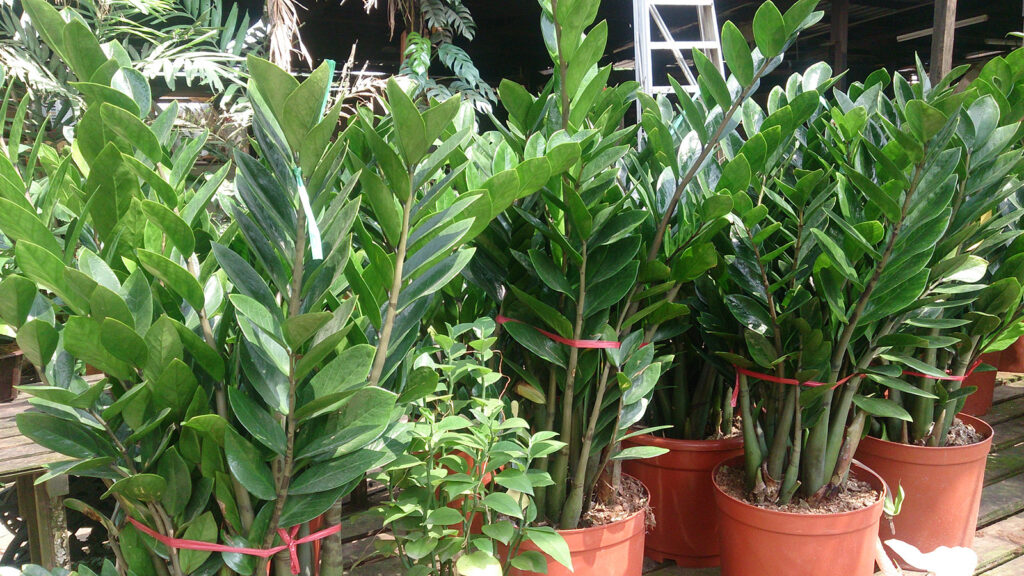
About Growing Plants in Small Containers
You can check our article about Growing Edible Plants and Herbs in Small Containers: An Indoor and Outdoor Guide. Although that article is about growing edible plants, a lot of the information regarding soil composition, natural additives, recycling, etc. are perfectly applicable to all types of indoor plants.
Pothos is a vigorous vining plant with trailing, heart-shaped leaves often variegated in green and yellow. Native to Mo’orea in French Polynesia, it is ubiquitous as a houseplant due to its ability to thrive in low to moderate light and tolerate a range of indoor conditions. Vines can trail decoratively or climb a support and may eventually reach 6–10 feet when mature.
| Flowers | Light (1-10) | Water (1-10) | Soil Prefs | Nutrient Reqs. | Pot Size (opt) | Pot Size (min) | Origin (geo) | Origin (time) | Suited For | Names |
|---|---|---|---|---|---|---|---|---|---|---|
| Y (very rare) | 3 | 4 | Moist | Medium | 5 | 1 | Mo’orea, French Polynesia | 1880 (discovered by botanists) | Tropical & subtropical (invasive in warm climates) | Devil’s Ivy; Golden Pothos |
Notes:
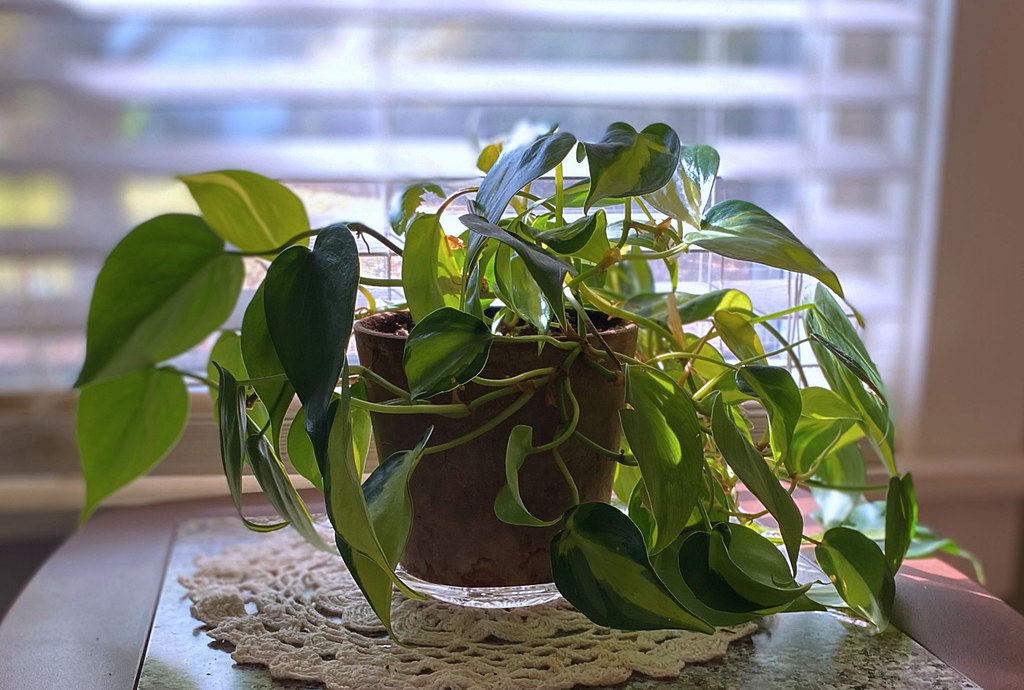
The spider plant is a graceful, arching houseplant featuring narrow green leaves with white stripes. It produces long, wiry stems carrying small, star-shaped white flowers and baby plantlets that dangle like “spiders”. Native to Southern Africa, it adapts easily across a wide range of indoor light conditions and can be grown in hanging baskets or on shelves.
| Flowers | Light (1-10) | Water (1-10) | Soil Prefs | Nutrient Reqs. | Pot Size (opt) | Pot Size (min) | Origin (geo) | Origin (time) | Suited For | Names |
|---|---|---|---|---|---|---|---|---|---|---|
| Y | 4 | 3 | Moist | Medium | 3 | 1 | Southern Africa | 19th Century (Victorian houseplant) | Subtropical (warm, humid; indoor globally) | Airplane Plant; St. Bernard’s Lily |
Notes:
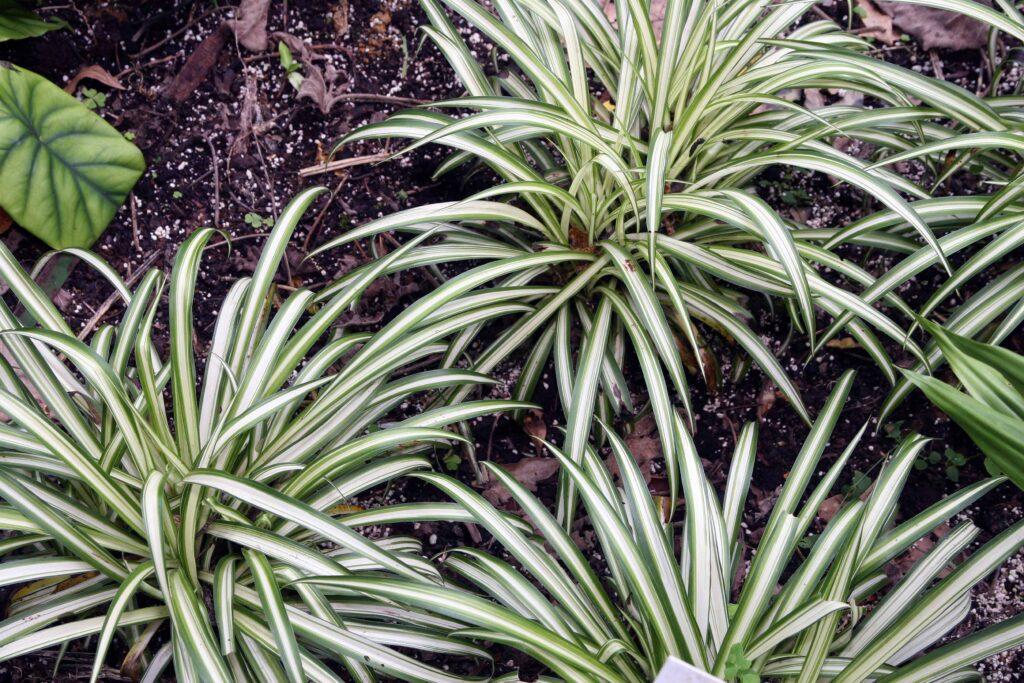
The peace lily is a tropical evergreen with glossy, lance-shaped leaves and elegant white “flowers” that consist of a hood-like spathe surrounding a cream spadix. It remains compact and blooms best in low to medium light, adding brightness with its white blooms. Native to the rainforests of northern South America, it was introduced into cultivation in the late 19th century.
| Flowers | Light (1-10) | Water (1-10) | Soil Prefs | Nutrient Reqs. | Pot Size (opt) | Pot Size (min) | Origin (geo) | Origin (time) | Suited For | Names |
|---|---|---|---|---|---|---|---|---|---|---|
| Y | 3 | 7 | Moist | Medium | 5 | 2 | Northern South America (Colombia) | 1877 (discovered by G. Wallis) | Tropical rainforest (humid, warm; indoor worldwide) | White Sails; Spathe Flower |
Notes:
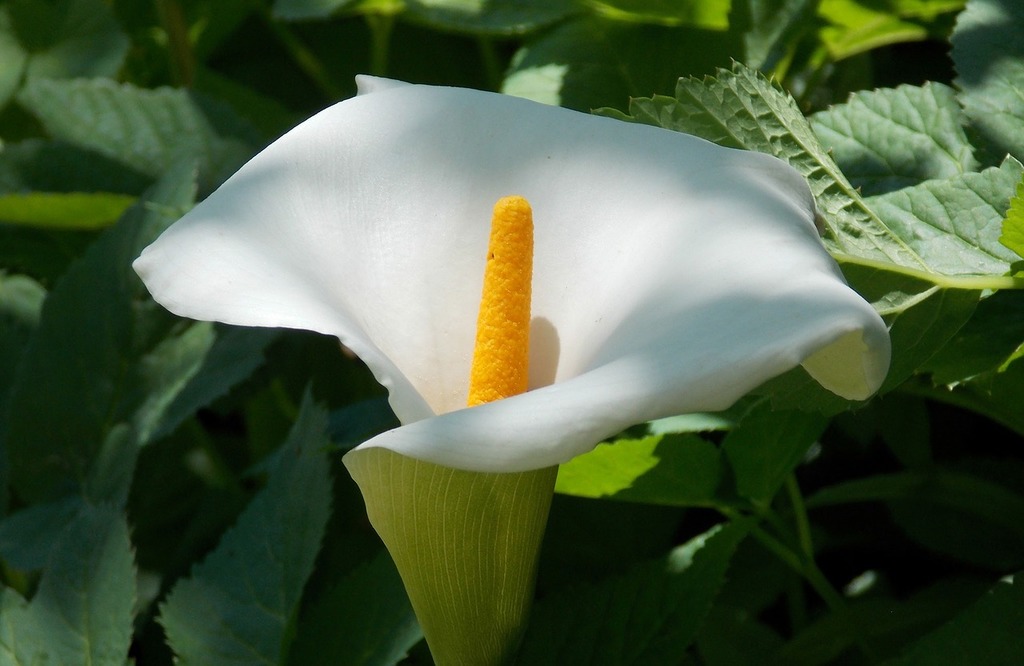
Chinese evergreens are lush, slow-growing foliage plants with broad leaves often marbled or speckled in silver, green, or red. Native to the shady understory of Southeast Asian forests, these plants thrive in very low light and have been kept as luck-bringing houseplants in Asia for centuries. They typically form a bushy clump about 1–2 feet tall and are prized for their striking variegation.
| Flowers | Light (1-10) | Water (1-10) | Soil Prefs | Nutrient Reqs. | Pot Size (opt) | Pot Size (min) | Origin (geo) | Origin (time) | Suited For | Names |
|---|---|---|---|---|---|---|---|---|---|---|
| Y (not showy) | 2 | 5 | Moist | Medium | 4 | 1 | Southeast Asia (Malaysia, Philippines) | 1885 (introduced to West via Kew) | Tropical rainforest (warm, shady; indoor globally) | Philippine Evergreen; Aglaonema |
Notes:
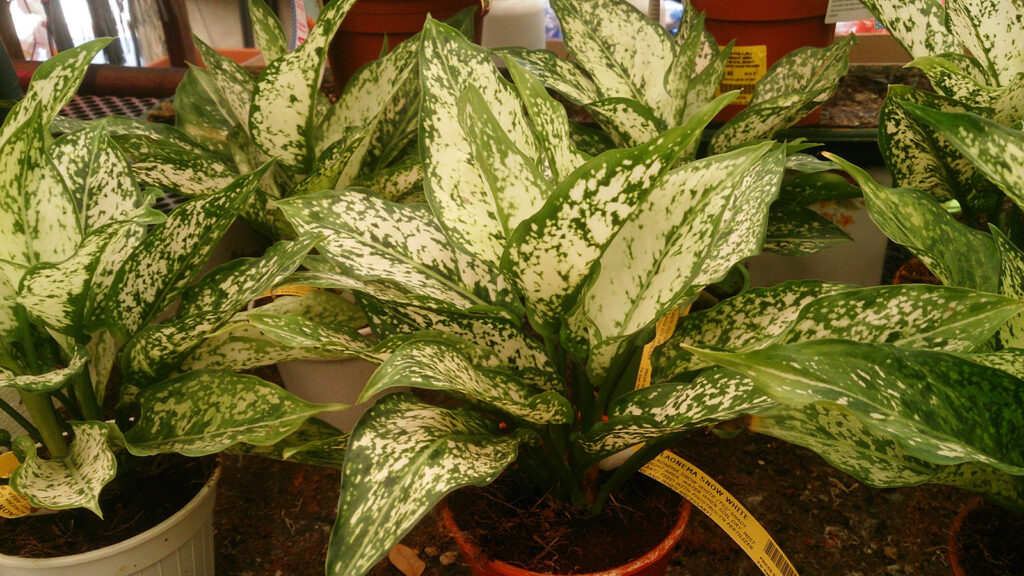
The cast iron plant is a stemless, rhizomatous plant with glossy dark green leaves emerging directly from the soil. Native to the shaded forest floors of China and Japan, it earned its common name by withstanding extreme neglect or adverse conditions. Widely popular in the Victorian era, it thrives in very low light, poor air quality, and infrequent watering, making it ideal for even the darkest corners of your home.
| Flowers | Light (1-10) | Water (1-10) | Soil Prefs | Nutrient Reqs. | Pot Size (opt) | Pot Size (min) | Origin (geo) | Origin (time) | Suited For | Names |
|---|---|---|---|---|---|---|---|---|---|---|
| Y (insignificant) | 1 | 3 | Dry | Low | 6 | 2 | China and Japan | 1820s (introduced to Europe – Victorian era) | Subtropical forests (shade-loving; indoor globally) | Barroom Plant; Iron Plant |
Notes:

The parlor palm is a dwarf palm tree forming graceful clumps of slender trunks topped with feathery fronds. Growing typically 2–6 feet tall indoors, it adapts well to low light and indoor conditions, earning it a reputation as a Victorian favorite. Native to the rainforests of Southern Mexico and Guatemala, it is often sold as a cluster, lending a delicate, tropical ambiance.
| Flowers | Light (1-10) | Water (1-10) | Soil Prefs | Nutrient Reqs. | Pot Size (opt) | Pot Size (min) | Origin (geo) | Origin (time) | Suited For | Names |
|---|---|---|---|---|---|---|---|---|---|---|
| Y (small) | 3 | 5 | Moist | Medium | 5 | 1 | S. Mexico & Guatemala | 19th Century (Victorian favorite) | Humid tropical forests (shade-loving; indoor globally) | Neanthe Bella Palm; Parlour Palm |
Notes:

The rubber plant is a broadleaf tropical tree grown indoors in a bush or tree-like form. It features large, leathery, oval leaves that are deep glossy green – some cultivars even show burgundy or variegated patterns. Native to Southeast Asia, it can grow large in nature but is kept pruned indoors to a manageable height. It brings a bold tropical accent and is relatively easy to care for with adequate light.
| Flowers | Light (1-10) | Water (1-10) | Soil Prefs | Nutrient Reqs. | Pot Size (opt) | Pot Size (min) | Origin (geo) | Origin (time) | Suited For | Names |
|---|---|---|---|---|---|---|---|---|---|---|
| Y (rare indoors) | 6 | 5 | Moist | Medium | 15 | 3 | S.E. Asia (India, Malaysia) | 19th Century (colonial rubber trade) | Tropical & subtropical (warm, humid; indoor in temperate zones) | Indian Rubber Tree; India Rubber Fig |
Notes:
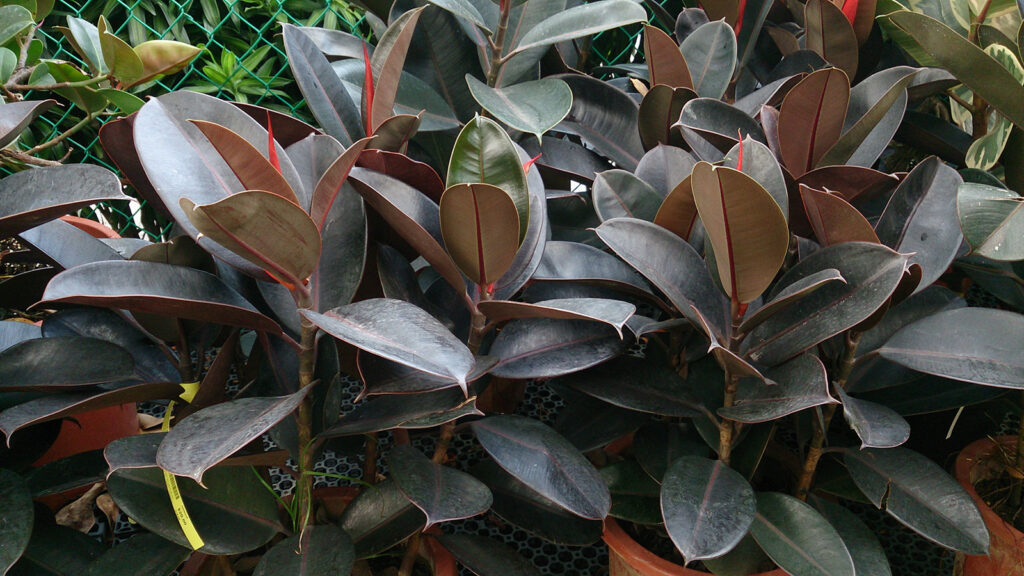
Monstera, also known as the Swiss cheese plant, is a large climbing vine prized for its dramatic, perforated leaves. Young plants start with simple heart-shaped leaves that develop deep lobes and holes as they mature. Native to Central America, the plant naturally climbs trees using long aerial roots. Indoors, it is often trained on a moss pole or allowed to trail, making a bold tropical statement.
| Flowers | Light (1-10) | Water (1-10) | Soil Prefs | Nutrient Reqs. | Pot Size (opt) | Pot Size (min) | Origin (geo) | Origin (time) | Suited For | Names |
|---|---|---|---|---|---|---|---|---|---|---|
| Y (in maturity) | 5 | 5 | Moist | Medium | 15 | 5 | Central America (Mexico to Panama) | 1840s (discovered by Europeans) | Tropical rainforest (warm, humid; indoor worldwide) | Swiss Cheese Plant; Ceriman |
Notes:
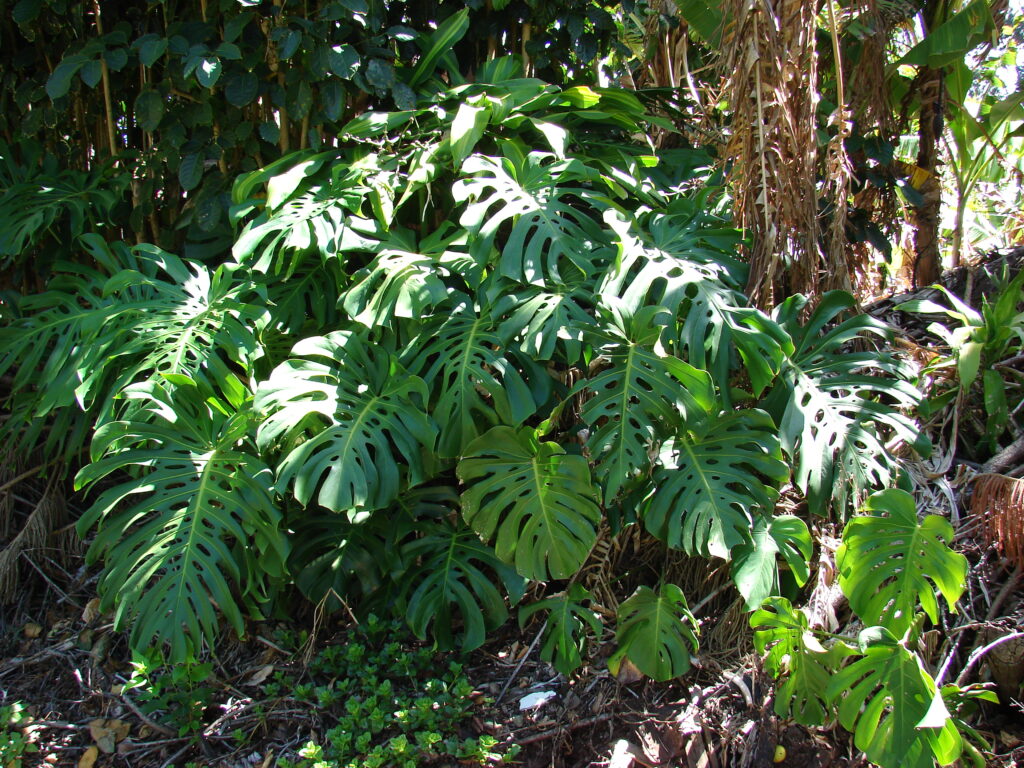
The heartleaf philodendron is a trailing vine featuring characteristic heart-shaped green leaves. The flexible vines make it ideal for hanging baskets or guiding along shelves and walls. Native to tropical Central America and the Caribbean, this plant is celebrated for being easy and forgiving even in low-light or variable watering conditions.
| Flowers | Light (1-10) | Water (1-10) | Soil Prefs | Nutrient Reqs. | Pot Size (opt) | Pot Size (min) | Origin (geo) | Origin (time) | Suited For | Names |
|---|---|---|---|---|---|---|---|---|---|---|
| Y (rare indoors) | 3 | 4 | Moist | Medium | 3 | 1 | Central America, Caribbean | Mid-20th Century (popularized as houseplant) | Tropical Americas (rainforest understory; indoor globally) | Sweetheart Vine; Velvet Leaf Philodendron |
Notes:
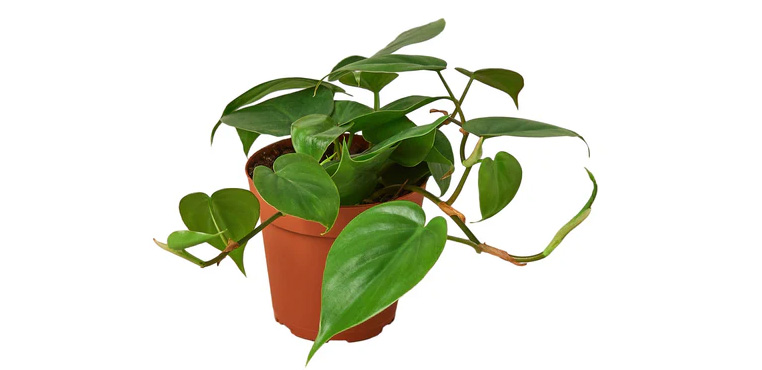
The jade plant is a succulent shrub with thick, woody stems and fleshy, oval evergreen leaves that may display red edges when exposed to sun. Over time, it can develop a tree-like appearance, though it is typically maintained as a compact potted plant. Native to arid parts of South Africa, it is very drought-tolerant and is often associated with good luck in feng shui practices.
| Flowers | Light (1-10) | Water (1-10) | Soil Prefs | Nutrient Reqs. | Pot Size (opt) | Pot Size (min) | Origin (geo) | Origin (time) | Suited For | Names |
|---|---|---|---|---|---|---|---|---|---|---|
| Y (rare indoors) | 7 | 2 | Dry | Low | 5 | 1 | South Africa | 17th Century (cultivated in Asia; Linnaeus 1768) | Semi-arid subtropical (dry, mild winters; indoor globally) | Lucky Plant; Money Tree (Money Plant) |
Notes:
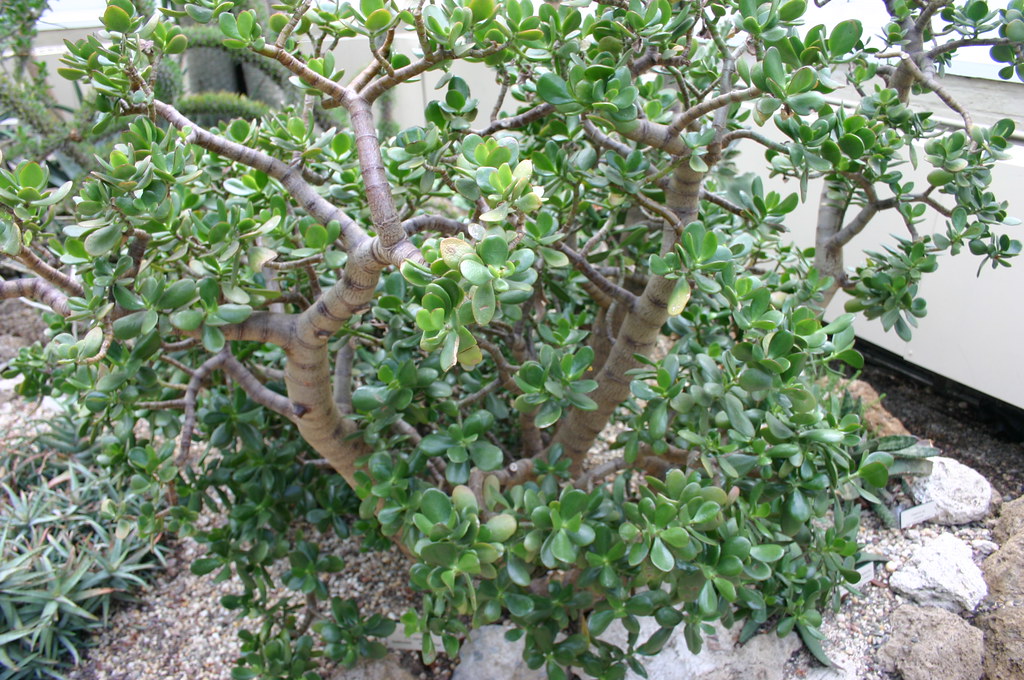
Dieffenbachia is a tropical foliage plant with thick canes and large, oblong leaves often featuring variegated patterns in green, yellow, or cream. It forms a lush, upright shape and typically reaches 3–5 feet tall. Native to the Caribbean and tropical Americas, it thrives best in warm, humid conditions and tolerates low to medium light. Its dramatic foliage lends a jungle feel to interiors.
| Flowers | Light (1-10) | Water (1-10) | Soil Prefs | Nutrient Reqs. | Pot Size (opt) | Pot Size (min) | Origin (geo) | Origin (time) | Suited For | Names |
|---|---|---|---|---|---|---|---|---|---|---|
| Y (not showy) | 4 | 6 | Moist | Medium | 8 | 2 | Caribbean & N. South America | Mid-19th Century (named after J. Dieffenbach) | Tropical wet forests (needs warmth and humidity; indoor globally) | Dumb Cane; Leopard Lily |
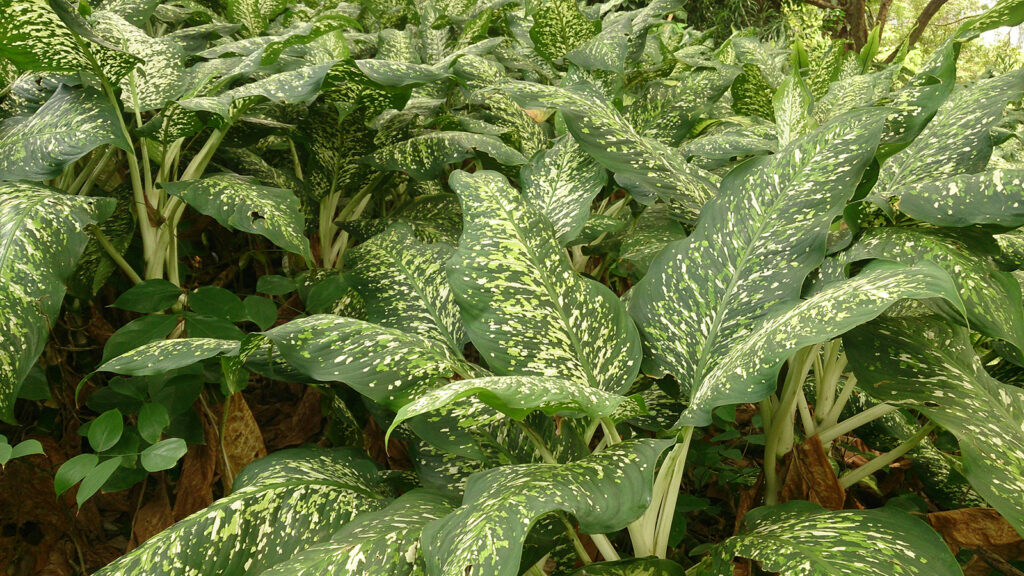
The silver vase plant is an epiphytic bromeliad that forms a rosette of leathery, silver-gray leaves shaped like an upright vase. Its striking pink flower head emerges from the center in the form of bright bracts with small purple flowers. Native to the rainforests of Brazil, it grows naturally as an epiphyte and is grown indoors primarily for its dramatic appearance.
| Flowers | Light (1-10) | Water (1-10) | Soil Prefs | Nutrient Reqs. | Pot Size (opt) | Pot Size (min) | Origin (geo) | Origin (time) | Suited For | Names |
|---|---|---|---|---|---|---|---|---|---|---|
| Y | 5 | 6 | Moist (well-drained) | Low | 3 | 1 | Brazil | 19th Century (discovered by J. Lindley) | Tropical rainforest (epiphytic; indoor greenhouse globally) | Urn Plant; Aechmea Bromeliad |
Notes:
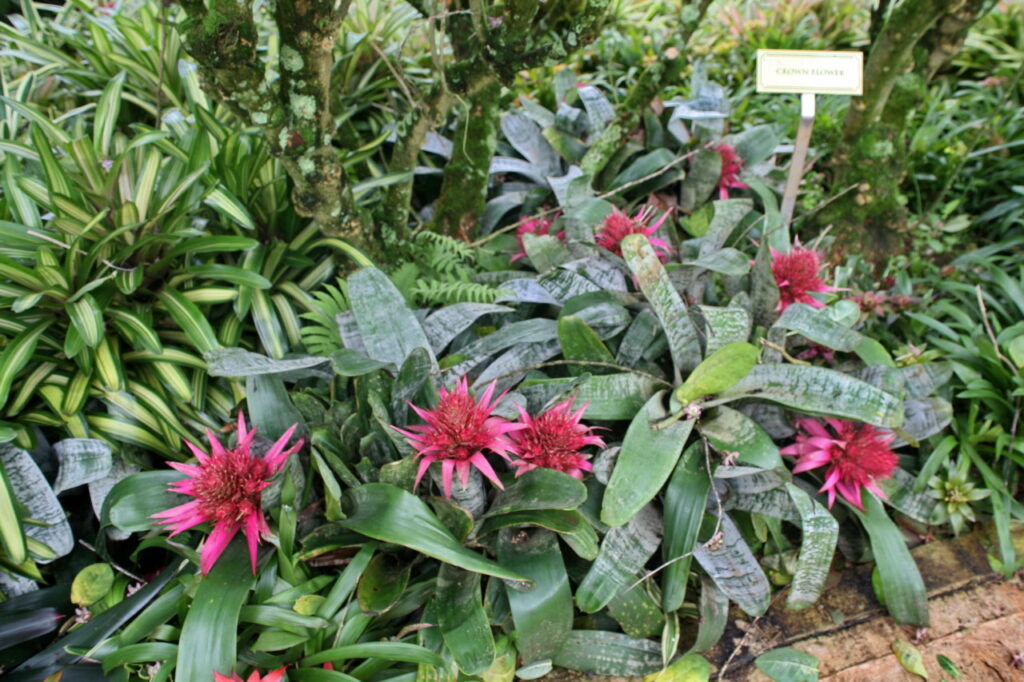
The dwarf umbrella tree is a tropical shrub that can be trained into a small indoor tree. It features glossy, palmately compound leaves with 7–9 leaflets arranged like an umbrella. Native to Taiwan and southern China, it adapts well to indoor conditions. Though it prefers bright, indirect light, it can tolerate medium light and is low-maintenance when pruned to a desired shape.
| Flowers | Light (1-10) | Water (1-10) | Soil Prefs | Nutrient Reqs. | Pot Size (opt) | Pot Size (min) | Origin (geo) | Origin (time) | Suited For | Names |
|---|---|---|---|---|---|---|---|---|---|---|
| Y (rare indoors) | 6 | 5 | Moist | Medium | 8 | 2 | Taiwan & S. China | 1916 (described by Hayata) | Humid subtropical (frost-free; indoor globally) | Dwarf Schefflera; Umbrella Plant |
Notes:
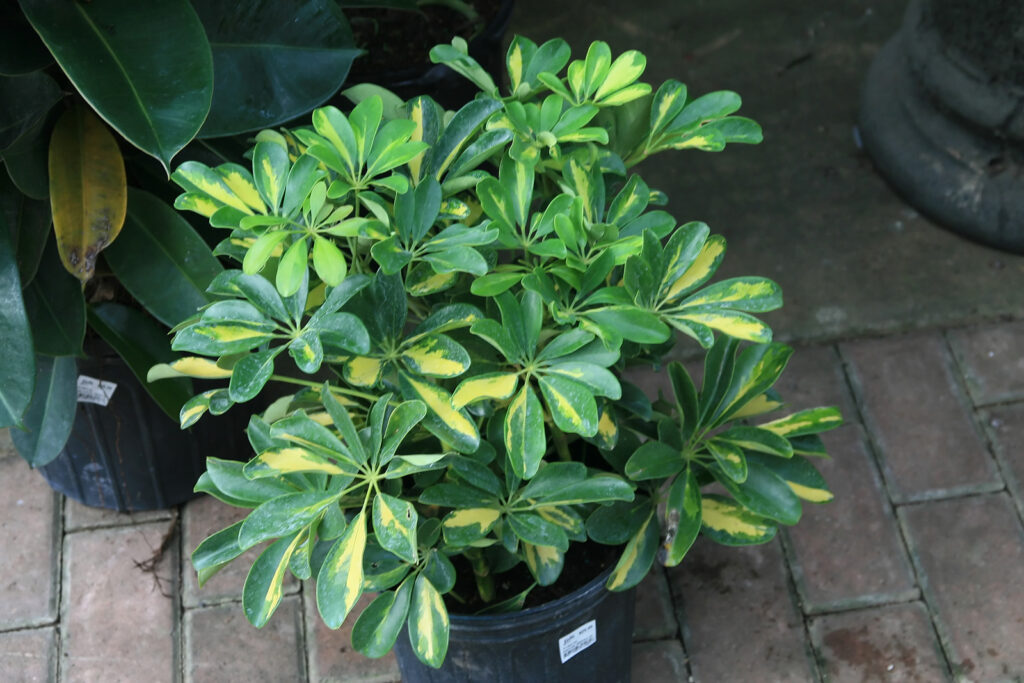
Pots and vases are great, but do you know what’s even better? Hydroponics. Specially if you use a simple to do at home Nutrient Film Technique hydroponics technique. For a guide that will guide you through building your first setup follow this link: NFT Hydroponics for Home Gardeners: A Complete Guide.